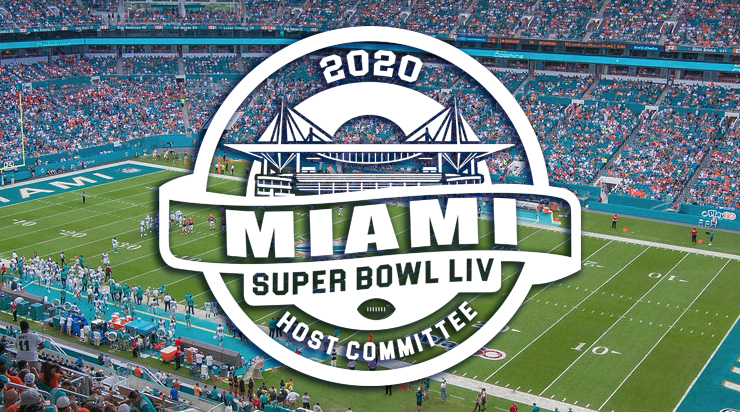
Super Bowl in Miami will be super good for some who need it least
On Sunday, Feb. 2, 2020, Miami will seem to some to be the center of the universe. At a bit past 6 in the late afternoon, approximately 100 million people will have their televisions turned on to the Super Bowl that next year will be played at Hard Rock Stadium in the northernmost part of Miami. Beer and alcohol will flow and large amounts of food consumed, and Miami business and political leaders will have declared this a great accomplishment and success for the city. They will cite studies that will claim the area reaped benefits from the Super Bowl worth no less than $150 million over that glorious weekend. Perfect blue skies with occasional puffy white clouds that will look like cushiony ringside seats for the gods to watch the game will herald Miami’s perfect, winter weather.
The pageantry will come with a price tag
By the end of this American celebration of excess, South Floridians will have spent no less than 15 million taxpayer dollars to host the affair. And if the 150 million dollar figure reaped in return is true (which is questionable), then numbers’ crunchers, with little interest in studying the true results of such an expenditure, will declare the 1,000 percent return on our money a good investment.
Yet, nobody asks who reaps the benefits. Because while we’re spending millions of dollars so that we can host a football game played by millionaires who are paid by billionaires from a league (the NFL) who in 2018 distributed $8.1 billion to every one of its teams (there are 32), the 2017 Census Bureau’s American Community Survey spit out the fact that Miami has the second-highest percentage of people living in poverty of any major metro area in the United States. In South Florida, an astonishing 921,000 people — 15.4 percent of the population — live below the poverty line.
To be fair, Miami depends on its tourism. That almost 200 million eyeballs are focused on a place that in the dead of winter might have 70 degree weather, beautiful beaches full of bathing tourists, great music, dancing, sexy and diverse multi-colored people, and everything else that makes us special, is no doubt a boon to the industry. In other words, it does help us attract persons who might decide to visit our shores and experience that special life of ours while spending money and making some of us richer.
But who are the real winners in this boondoggle known as the Super Bowl, whose commercials on TV cost more than $5 million for 30 seconds?
Let us assume that the $150 million figure is true. I would then venture to say that from the Miami area, and this is a guesstimate, but one I think is not far from the truth, about 10,000 people reap those benefits. In other words, based on a population of approximately 2.5 million people in Miami-Dade County, less than one-half of 1 percent of Miamians see real returns on our money from the Super Bowl… I’ll even be generous and grow those 10,000 persons to 100,000 — still only 4 percent of our population.
Then you see statistics that tell us that one out of every four persons who lives in Miami lacks health insurance — a number well above the national average: a shameful one in every six persons. These are facts found in the latest report of the County Health Rankings, a program of the Robert Wood Johnson Foundation.
It’s when I start to wonder if our priorities are stacked right…
Because I will confess that I’m one of those people who will probably be at a party, or even at home, watching the ballgame with friends and commenting on Miami’s winter beauty and how it looks on TV, while watching the game and eating and drinking.
By writing this down, though, and truly thinking about it, I start to realize that what we’re seeing with our upcoming Super Bowl simply mirrors what’s happening in the country we live in. There is a tiny group in power — be it political and/or in business — who sell us an idea. Then it is advertised (propaganda) as panacea, the beginning of a solution to our problems: more tourism brings more money to our shores.

And who profits?
It’s only the 10,000 to 100,000 persons who profit from this venture. And it was paid for in its entirety — by us. It’s the one percent profiting from the work of the 90 percent who are having a hard time making ends meet.
Think about this. A few years back Miami politicians and business leaders built and handed over a baseball stadium that will end up costing taxpayers more than a billion dollars to a man who then sold the team for more than a billion dollars. We turn over millions to sports adventures like the Super Bowl because it produces great parties that regular Miamians will never attend. We then give them taxpayer money whose investment will only bear fruits for others.
But… in 2011, Mayor Carlos Gimenez threatened to shut down 13 libraries — where democracy truly reigns because a homeless person and a millionaire can be found reading a book for free — because the county did not have the money to afford them. Public schools receive less and less money every year because there is not enough money in our budgets, and some of it is sidetracked to rich, for-profit school owners. Poverty permeates our city — if you visit the right places. But our budget crunch can’t help in this area. And people without insurance have a hard time seeing a doctor at the ONE hospital we have who serves those who can’t afford to go anywhere else — because services are being limited because of NO money.
And yet, the billionaires and millionaires who control the Super Bowl wanted $15 million from Miami… and the money showed up with the blink of an eye.
Still there are assholes who boast we’re making America great again. Yeah. Sure.

